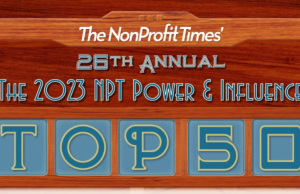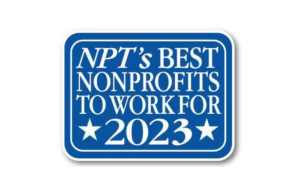The 13,062 establishments that make up New York City nonprofits contribute nearly $78 billion, or 9.4 percent of the city’s economy, annually. The 662,025 workers the sector employs represent almost 18 percent of the workplace, according to a report from the New York City Comptroller’s office.
Women make up 64 percent of all nonprofit workers. The sector also is ethnically diverse: Whites make up 44 percent of all workers, followed by Latinx (21 percent), Black (20 percent) and Asian (11 percent). Slightly more than half of all nonprofit workers are younger than 40.
The study, “The Economic Impact of NYC Nonprofit Organizations,” was done in conjunction with Nonprofit New York, a New York City-based nonprofit advocacy, education, and training organization. The report seeks to prioritize nonprofit concerns as the city takes legislative and budgetary actions in response to the COVID-19 pandemic. Most of the data reflects nonprofits’ demographics as of 2017 — the latest data available.
The report comes at a time when the coronavirus, coupled with increased focus on racial inequality, have revealed the tenuous position of city nonprofits.
“The nonprofit sector cannot be sidelined during conversations about the city’s economic health and stability,” New York City Comptroller Scott T. Stringer said via a statement. “Our nonprofits provide essential cultural, educational, health and social services to millions of New Yorkers. While the city has to make tough budgetary decisions in this crisis, we cannot nickel and dime the very same nonprofits we will rely on to support our most vulnerable communities and we cannot afford to lose the jobs and revenue that the sector contributes. Any plan for New York City relief and recovery must prioritize our nonprofits who are the essential fabric of our social safety net.”
On June 30, New York City passed an $88.19-billion budget. New York City Mayor Bill de Blasio had initially proposed a $95.3-billion budget, but loss of revenue from business shutdowns and unexpected expenses linked to the pandemic required significant trimming.
“[Nonprofits] have put their mission and communities first, managed immense change with no lead time, and found ways to respond to increased needs with diminished resources,” President and CEO of Nonprofit New York Meg Barnette said via a statement. “But they cannot support families facing trauma, they cannot help organize for justice, they cannot lift up communities, indeed many cannot even survive without the relief, funding, and respect that reflect their critical role in our city’s economy and communities.”
The nonprofit sector encompasses a wide variety of functions. Religious and civic organizations make up one-third of all nonprofits, followed by social service organizations at 22.6 percent. Healthcare (13.2 percent), education (12.9 percent) and arts, entertainment and recreation organizations (5.6 percent) also are well represented among the city’s nonprofits, with the remaining 12.6 percent made up of a variety of smaller focuses.
New York City nonprofits lay out $42 billion in wages every year, representing a median wage of $63,056, compared with $93,133 within all private sector jobs. Nonprofit jobs are often in essential service: healthcare nonprofits employ 251,510 workers, followed by education (147,594 employees) and social services (127,889 employees). Combined, these three sectors represent nearly 80 percent of all nonprofit jobs.
Between 2013 and 2017, nonprofits saw a steady increase in their employment numbers, rising 5.4 percent annually. While no single occupation category made up a majority of jobs, education, training, and library functions amounted to 15.5 percent of all nonprofit employees, followed by management (14.1 percent); office and administrative support (12.9 percent); healthcare practitioners and technical occupations (9.8 percent); community and social service jobs (8.6 percent) healthcare support (6.5 percent); business operations (4.3 percent); arts, design, entertainment, sports and media (3.8 percent); building and grounds clearing and maintenance (3.8 percent); and personal care and service occupations (3.3 percent).
Nonprofit employers include general medical and surgical hospitals, as well as specialty hospitals (12.3 percent); civic, social and advocacy organizations, as well as grantmaking and giving services (11 percent); higher education institutions (11 percent); elementary and secondary schools (10.5 percent); individual and family services (8.4 percent); religious organizations (4.4 percent) and home health care services (2.8 percent). Child day care services; museums, art galleries, historical sites and other cultural institutions; and outpatient care centers made up 2.4 percent each.










